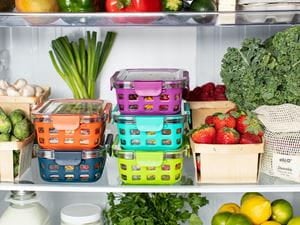
Maintaining a healthy diet is usually easier said than done in today’s fast-paced and dynamic world, which most of us know the feeling. Just looking through the numerous healthy diets to find out which is best for you can be a challenge. Even after you find an eating pattern or meal plan, the hard part comes with maintaining your healthy diet day in and day out.
After you’ve picked out an eating pattern or meal plan, preserving that healthy diet daily has its fair share of problems. You start intending to eat better and lose weight, only to return to your old habits within the next two weeks. Crash diets and depriving yourself don’t work, and you don’t want to give up your favorite foods. So how can you make your longing to eat healthy a lifestyle? There are numerous ways to make healthy eating more manageable; the good news is that most are free and simple. Here are some ways-/ to make eating healthy a lifestyle.
Start small.
Don’t feel the need to make drastic changes, like going to the gym daily or getting rid of food groups. Instead, try starting with small diet shifts for a permanent effect. Going to the extreme and changing everything at once will only set you up for failure. It would help to make small weekly goals of a healthy change you’d like to develop.
For example, you could set a goal of drinking one glass of water when you wake up, going to bed 30 minutes earlier, or adding more veggies to your lunch. Small changes can add up, helping you make eating healthy a way of life instead of depending on short-term crash dieting.
Don’t eliminate your favorite foods.
One significant diet red flag is taking away your favorite foods. A small daily treat can help you stick with your diet and feel better about what you’re eating. Research from the Journal of the American Dietetic Association indicates that eating one small treat a day doesn’t sabotage trying to lose weight, meaning that your favorite foods can fit into your diet.
You can have small portions of decadent foods like brownies. If you’re a pasta lover, consider adding vegetables to increase your serving instead of eating more pasta. Don’t eat treats you’re not excited about, but don’t remove the foods you love altogether. Your diet should include mostly healthy foods like veggies, fruits, whole grains, and lean proteins, but be sure to save room for your favorite treats.
Eat foods that keep you full.
Sticking to a healthy-eating plan will be hard if you’re constantly hungry. Research implies that when you’re hungrier, you’re likely to eat your next meal too fast. Eating too fast can force you to take in too many calories because your body doesn’t have time to register feeling full. Portion control is essential for weight loss and keeping it off, but your stomach shouldn’t growl all day.
The three nutrients that help keep you full are fiber, fat, and proteins. Good protein sources include chicken breast, tuna, plain Greek yogurt, and almonds. It would help if you weren’t afraid of fat but realized it has a purpose. Fat enables you to absorb certain nutrients and is super-satisfying. Plus, it tastes good. It would be best if you tried to add more healthy fats to your diet like nuts, nut butter, avocados, and olive oil. To add more fiber to your diet, you should snack on foods like veggies, fruits, and whole grains. Produce is high in fiber and typically low in calories.
Perfection isn’t your friend.
Often, we have big ideas about how we’ll execute new diet-like promises to ourselves, like never eating bread again, removing sugar from our diet, or always eating vegetables at dinner. Instead of aiming for perfection, try to be realistic with yourself and create an eating play that you’ll stick with for the long term. Perfect eating doesn’t make you lose weight, but eating well does. Set healthy goals for yourself for the week, like packing a healthy lunch for a couple of days, and don’t be too hard on yourself if you mess up. Eating treats is bound to happen; when they do, don’t give up.
Plan in advance for eating out.
Happy hour, potlucks, and dining out are a highlight for some people but can feel like another obstacle for those trying to stick with a healthy or new diet. Restaurant meals are usually higher in fat, sugar, sodium, and calories than home-cooked meals. They also come in bigger serving sizes than home-cooked meals.
When we’re around other people, our food choices are heavily influenced by the preferences of the people we’re with, so it can be easy to go overboard when eating out, and sticking with a healthy diet is very tough. However, there are ways to alleviate these issues. Strategizing before you get to the gathering or restaurant can go a long way in helping you feel prepared and easing your mind when it comes to navigating eating out. Some tips for eating out include researching the menu before you go, snacking on fruit before you get there, hydrating during the meal, and eating slowly.
Get back on track if you waver.
If you overeat one day, don’t beat yourself up; dust yourself off and try again. Remember that one bad meal . Don’t give up or wait until Monday to reestablish the healthy habits you’ve created. If you have a slight setback, try to realize that it’s one tiny blip on the radar of healthy eating. Get back to the foods that make you feel good, and you’ll be back on track for success in the long term.
Breaking old habits to make way for new ones isn’t easy, but it’ll be worth it in the long run when it comes to eating healthy. The biggest takeaway to making eating healthy a lifestyle is not giving up on yourself if you stumble. We all make mistakes, but you must try again if you want your diet to stick.

